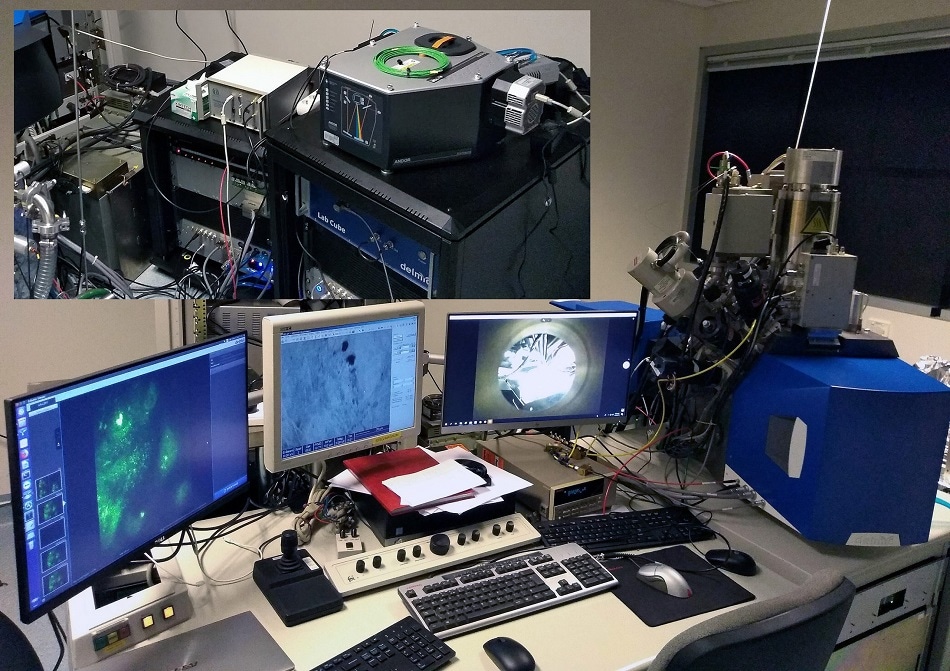
The Delmic SPARC cathodoluminescence system and SECOM CLEM solution installed on the same FIB-SEM instrument at UTS. The inset shows the external deep UV spectrometer and LAB Cube time-correlation module.
AXT and Delmic are proud of a first in the world installation. They recently installed a Delmic SPARC cathodoluminescence (CL) and SECOM correlative light and scanning electron microscope (CLEM) on the same FIB-SEM at the Microstructural Analysis Unit at the University of Technology, Sydney (UTS).
The SPARC is the most comprehensive and versatile CL system available, offering more measurement modes than any other system. This installation is made even more significant by virtue of the fact that it is the first in the world to feature the Delmic LAB Cube time-resolved CL module which provides invaluable information to research into photovoltaics, light emitting devices and single emitters. It also features outstanding light collection efficiency and other optimised optics to maximise collection efficiency. The specific system installed at UTS includes three high sensitivity CCD cameras covering the UV, visible and NIR spectral ranges (180 to 1600 nm).
Combining optical fluorescence microscopy and Scanning Electron Microscopy (SEM) in situ, the unique SECOM instrument is normally used for biological applications. While their system will be used for this application, it has also been adapted to study advanced light-emitting materials using photoluminescence (PL).
By installing both systems on the same FIB-SEM instrument, the UTS researchers have unlocked the potential to carry out some unique correlative experiments. These experiments can provide new insights into novel materials such as multifunctional 2D materials, advanced metamaterials and single photon emitters with applications in quantum plasmonics and nanophotonics.
We have been involved with CL research for many years and the new SPARC expands and enhances our capabilities. I am very interested in exploring the new angle-resolved, time-resolved and polarised CL modes as well as looking at how we can apply the complimentary datasets from the SECOM system.
Professor Matthew Phillips, University of Technology, Sydney (UTS)
This unique setup was acquired thanks to funding from the Australian Research Council (ARC grant LE180100030), involving collaboration between several universities in NSW, Queensland and Victoria. This will see the system used by many researchers who will be involved in the characterisation of a wide range of materials such as nanophotonics, optoelectronics, plasmonics and other emerging materials.
For more details on the Delmic SPARC and SECOM systems as well as AXT’s vast microscopy portfolio, please visit www.axt.com.au.